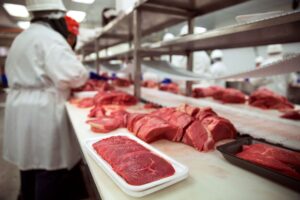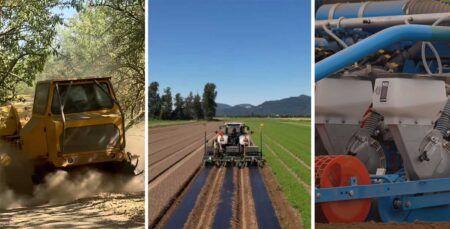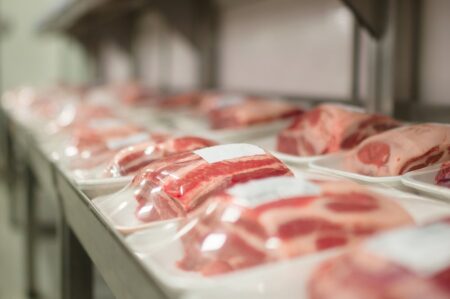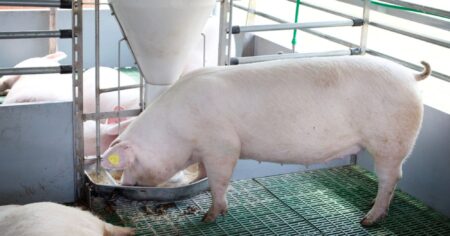This past March, I spoke at the Commodity Classic conference in Denver for Successful Farming. My presentation highlighted how the price patterns for corn and soybeans in 2025 could be very similar to 2024. I recommended earlier seasonal selling dates, and highlighted some key weeks to watch for a change of trend — as well as the importance of avoiding sales in August. The main recommendation was to get new-crop corn, soybeans, and wheat protected in April, May, and June with a combination of hedges, forward contracts, and puts.
Did my predictions work? Let’s take a look, starting with a recap of 2024.
Corn
In 2024, the nearby corn futures rallied to a high ($4.62) in January. (Note that December 2024 corn futures also peaked in January, at $4.95.) Nearby corn futures then pulled back to the February low ($3.94). The May high came in at $4.70; then, corn prices turned lower and kept moving downward until the low ($3.60) in August. Prices then rallied into October and November, peaking at $4.29.
In 2025, the nearby corn futures put in a high ($5.04) in early February. (The December 2025 corn contract also put in a high in February, at $4.79.) Nearby corn futures dropped to a March low ($4.26), then rallied to $4.69 before dropping to the August low ($3.69). The February high for corn futures was highly unusual. Farmers did not have a second opportunity to sell on any weather scare rally in 2025.
Soybeans
In January 2024, nearby soybean futures put in a high at $12.47. (November 2024 soybean futures also peaked in January, at $12.11.) Prices fell to the February low ($11.15), then rallied to the May high ($12.47). Futures turned lower again in May and dropped further into the August low ($9.36). Prices rallied to $10.69 in September, and then fell to the final low ($9.45) in December 2024.
In 2025, the nearby soybean contract put in a high ($10.76) and double top in late January and early February. (November 2025 soybean futures also peaked in February, at $10.73½.) Prices fell to the March low ($9.70), rose to the next high ($10.80) in June, then fell again to the mid-August low ($9.62). Nearby soybean prices have been in a $1.20 trading range the entire year, with no opportunity to sell at a fair profit level. You had two chances to sell November 2025 soybeans above $10.70 (February and June 2025); the lows came in at $9.70–9.80.
More than one farmer has asked me, “Where did the seasonal rally go the last two years?” My answer: We did have a seasonal rally in April and June — but it wasn’t big enough to take out the January and February highs. Furthermore, the new-crop prices were not high enough to top the February crop insurance guarantee. It was challenging to sell at what was, at best, a modest profit level, but selling between April and June was better than holding-and-hoping into August.
Three Sell Signals
Here are the three sell signals that worked in 2024 and 2025:
- Basis getting wider. When corn and soybeans rallied in January and February, basis levels improved. Many farmers in the western Corn Belt were selling on a premium basis. When the basis bids started to widen out, it was a sell signal.
- Improving March–July spreads. When the corn and soybean markets rallied, the March–July spreads improved. When the spreads started to collapse, it was a sell signal.
- March corn and soybean futures closing below their 10-day moving averages. This was well off the high, but if you cleaned out the bin on this final sell signal, it sure looked good one month later.
Will 2026 Be Different?
I think so. It is rare that you have the same pattern two years in a row — let alone three — but not unprecedented. Review the long-term corn and soybean charts from 2014–2016. The markets were in a narrow trading range and tended to put in major preharvest lows in August each year. However, looking ahead, I think it is particularly unlikely we will have another ideal growing season in North and South America in 2026.
What did I learn from 2024 and 2025? You need to make cash sales and get new-crop hedges in place between April and June. Next year, I will probably use more puts, and place fewer hedges. This will let me have a floor, to guarantee some minimum prices, but not a lot sold at prices at or below most of my customers’ cost of production.
What About Right Now, in October?
For corn and soybean farmers, try to store as many bushels as possible, even if it is only temporary storage. The current wide basis level is not likely to improve until mid- to late November. If you sell your cash grain on a wide basis, there is nothing I can do as a commodity adviser to get that money back for you.
For livestock feeders or anyone who needs to buy corn, soybeans, or soybean meal, early October can be a great time to get started on making those purchases.
Meanwhile, keep an eye on these key periods for a change of trend in the corn and soybean markets:
- Option expiration day, Friday, Oct. 24: Watch soybean prices as we approach this date.
- Late October: Watch soybean price action carefully as we approach Oct. 31, the first delivery day on the November soybean futures contract.
- November: This is when the trade’s attention shifts to weather and planting conditions in South America. Watch for a South America weather scare.
Back to those predictions from the stage in Denver: Did my plan work? Well, it wasn’t the kind of year you dream of, but it’s the kind of year you survive, and my plan helped with that. Make a plan for your farm, and you will be around to do it all again next year. •
Note: The risk of loss in trading futures and/or options is substantial, and each investor and/or trader must consider whether this is a suitable investment. Past performance — whether actual or indicated by simulated historical tests of strategies — is not indicative of future results. Trading advice reflects good-faith judgment at a specific time and is subject to change without notice. There is no guarantee that the advice given will result in profitable trades.












